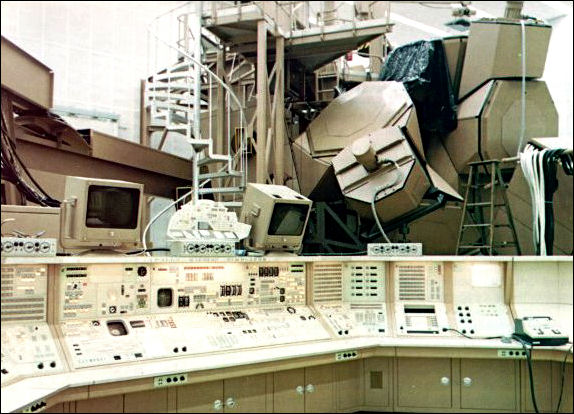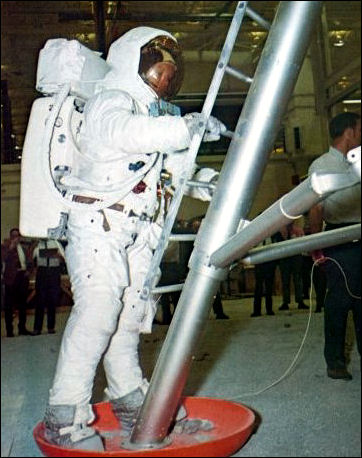
|
| "The great train wreck" was John Young's description of the contraption beyond the console. At the top of the stairs was a compartment that exactly duplicated a command module control area, with all switches and equipment. Astronauts spent countless hours lying on their backs in the CM simulator in Houston. Panel lights came on and off, gauges registered consumables, and navigational data were displayed. Movie screens replaced the spacecraft windows and reflected whatever the computer was thinking as a result of the combined input from the console outside and astronaut responses. Here the astronauts practiced spacecraft rendezvous, star alignment, and stabilizing a tumbling spacecraft. The thousands of hours of training in this collection of curiously angled cubicles paid off. Many of the problems that showed up in flight had already been considered and it was then merely a matter of keying in the proper responses. At left (below), Charles Conrad and Alan Bean in the LM simulator at Cape Kennedy prepare to cope with any possible malfunctions that the controllers at the console outside could think up to test their familiarity with the spacecraft and its systems. |

|




